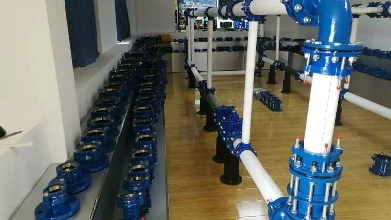Enhanced Vehicle Security with Protective Bollards for Public Spaces
Understanding Vehicle Protection Bollards Enhancing Safety and Security
In today's world, where urban spaces have become increasingly congested and security threats are ever-present, the need for effective safety measures has never been more critical. One such measure that has garnered attention in both commercial and public settings is the vehicle protection bollard. These sturdy and often aesthetically designed barriers serve as essential tools in safeguarding pedestrians, buildings, and sensitive areas from potential vehicular threats.
What Are Vehicle Protection Bollards?
Vehicle protection bollards are essentially vertical posts made from various materials, including steel, concrete, and plastic. They are strategically placed to prevent unauthorized vehicle access to specific areas while allowing pedestrian movement. While they may seem like simple structures, the design and engineering behind these bollards are vital to their effectiveness.
They come in various forms, including fixed, removable, and retractable bollards, each serving different purposes. Fixed bollards are permanent installations designed to deter vehicles from entering hazardous zones. Removable bollards offer flexibility, allowing for the temporary closure of areas for events or maintenance without permanent obstruction. Retractable bollards provide an advanced solution, being lowered into the ground when access is needed and raised when restriction is required, allowing for seamless traffic flow.
The Importance of Vehicle Protection Bollards
1. Safety for Pedestrians One of the primary functions of vehicular protection bollards is to enhance pedestrian safety. In crowded urban environments, the presence of these barriers can significantly reduce the risk of accidents, particularly in high-traffic areas such as shopping districts, parks, and public transport stations. They create a protective buffer zone, ensuring that pedestrians can navigate these spaces with reduced fear of being struck by an out-of-control vehicle.
2. Preventing Terrorism and Vandalism In recent years, there has been a concerning increase in vehicular attacks, where individuals use cars or trucks to target crowded locations. Bollards are a crucial line of defense against such threats. By fortifying entry points and vulnerable locations, they create physical obstacles that can withstand significant impact, thereby protecting both people and property. Moreover, they also deter vandalism, as potential offenders are less likely to target locations with robust security measures in place.
3. Protecting Infrastructure Beyond pedestrian safety, vehicle protection bollards play a vital role in maintaining the integrity of buildings and critical infrastructure. Government buildings, museums, airports, and even private commercial buildings often utilize these barriers to safeguard their facilities against potential vehicle collisions. The costs associated with repairs from such incidents can be astronomical, making preventative measures essential.
vehicle protection bollards

4. Aesthetic Appeal While functionality is crucial, modern vehicle protection bollards also emphasize design. Many municipalities and businesses opt for aesthetically pleasing bollards that complement the surrounding architecture rather than detract from it. These can incorporate decorative features, LED lighting, and color schemes that enhance the overall visual appeal while still serving their protective purpose.
Choosing the Right Bollards
When selecting the appropriate vehicle protection bollards for a given location, several factors must be considered
- Impact Resistance Bollards must be rated for their ability to withstand vehicular impacts. Standards exist for determining the level of protection required based on the potential risk posed by vehicles in the area.
- Material Selection Different materials offer varying levels of durability and aesthetic appeal. Steel bollards, for instance, provide the highest level of protection but may not blend as seamlessly into urban landscapes as decorative concrete options.
- Functionality Depending on the intended use—whether for permanent restriction, temporary barriers, or areas requiring flexible access—choosing the right type of bollard is crucial.
Conclusion
In a time where public safety is increasingly paramount, vehicle protection bollards serve as an essential solution for mitigating risks in both urban and suburban environments. By offering safety for pedestrians, safeguarding infrastructure, and enhancing aesthetic appeal, these barriers are integral to modern security strategies. Investing in high-quality vehicle protection bollards can create a more secure environment, fostering peace of mind for communities everywhere. As cities continue to evolve, integrating innovative security measures like these will be critical in ensuring the safety and security of all who inhabit and pass through them.
-
The Smarter Choice for Pedestrian AreasNewsJun.30,2025
-
The Gold Standard in Round Drain CoversNewsJun.30,2025
-
The Gold Standard in Manhole Cover SystemsNewsJun.30,2025
-
Superior Drainage Solutions with Premium Gully GratesNewsJun.30,2025
-
Superior Drainage Solutions for Global InfrastructureNewsJun.30,2025
-
Square Manhole Solutions for Modern InfrastructureNewsJun.30,2025
-
Premium Manhole Covers for Modern InfrastructureNewsJun.30,2025
